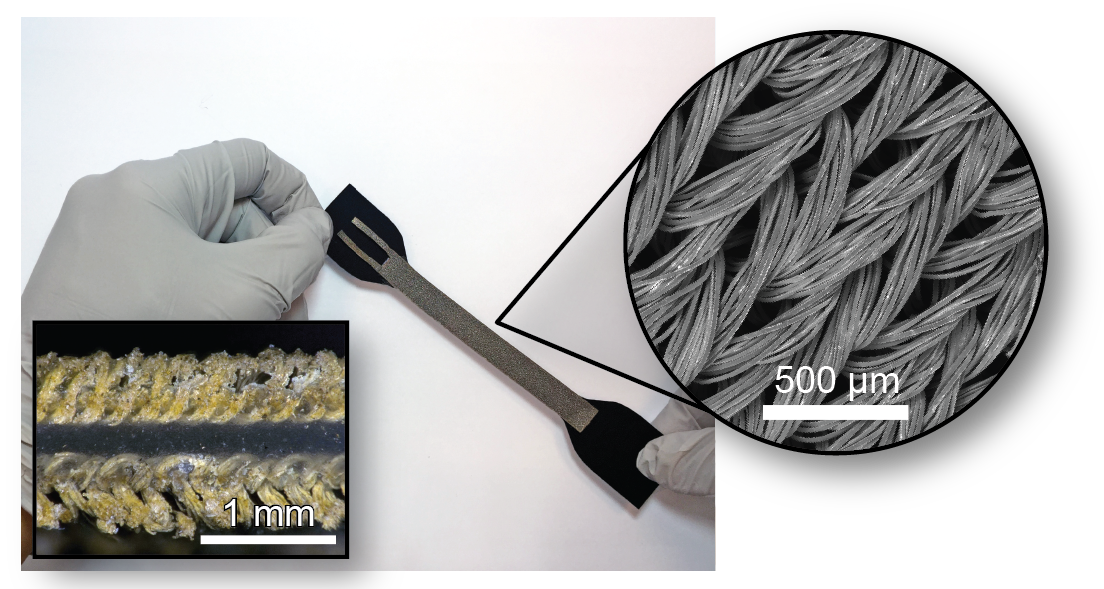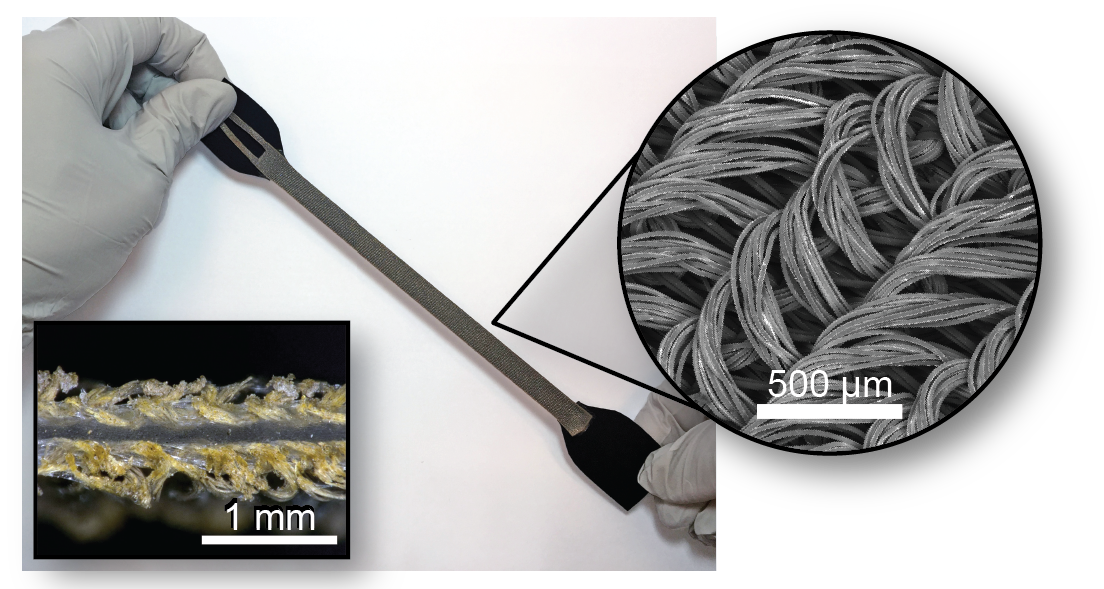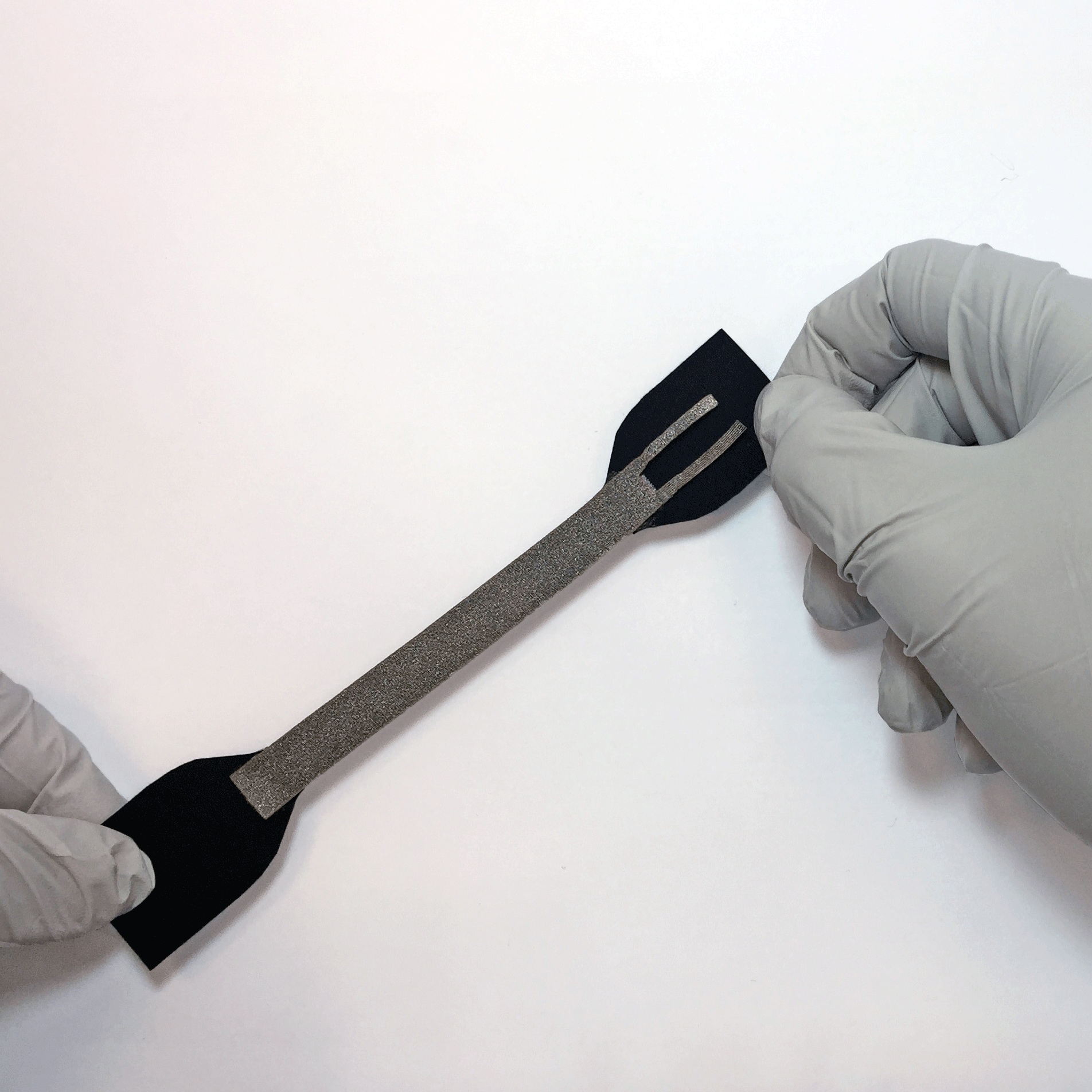Textile Silicone Hybrid Sensors (A. Atalay et al. 2017) are highly stretchable capacitive sensors, made up of three layers; two outer electrode layers of highly stretchable silver plated knitted textile that surround a dielectric layer of silicone elastomer. When the electrode area and the dielectric thickness change in response to applied strain, a capacitance change occurs. Consequently, measuring the change in capacitance can be used to determine the magnitude of an applied strain.

|

|
The sensor is designed to address the limitations of traditional capacitive soft sensors by utilizing a hybrid approach combining silicone and textiles to create a composite with favorable mechanical properties. Additionally, a process for creating robust hard-to-soft connection for these sensors with micro coaxial cable secured to the electrode layers is discussed within the fabrication section.

|
Soft sensors are well suited for continuous monitoring of body movements, human-machine interfaces and for measuring physiological parameters of the human body when compared to their traditional more rigid counterparts. The Textile Silicone Hybrid Sensor is capable of enduring repeated dynamic strain with fast response times, making it specifically well suited in human articulation detection, soft robot applications and exoskeletons. In these applications, sensors need to be able to obtain accurate measurements close to the human body in a comfortable manner and that is straightforward to integrate into wearable garments. A case study of this application is detailed in the Case Study page.
This documentation set contains files and instructions detailing the design, fabrication and testing of a specific Textile Silicone Hybrid Sensor. This process can be customized to diverse applications by creating variations in material, size and construction.
| Some of the information contained in this web site includes intellectual property covered by both issued and pending patent applications. It is intended solely for research, educational and scholarly purposes by not-for-profit research organizations. If you have interest in specific technologies for commercial applications, please contact us here. |
